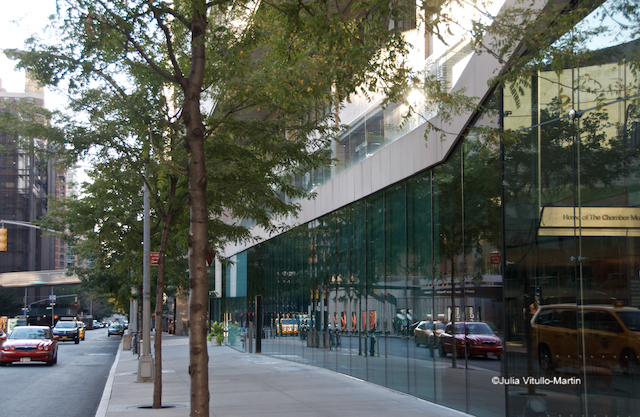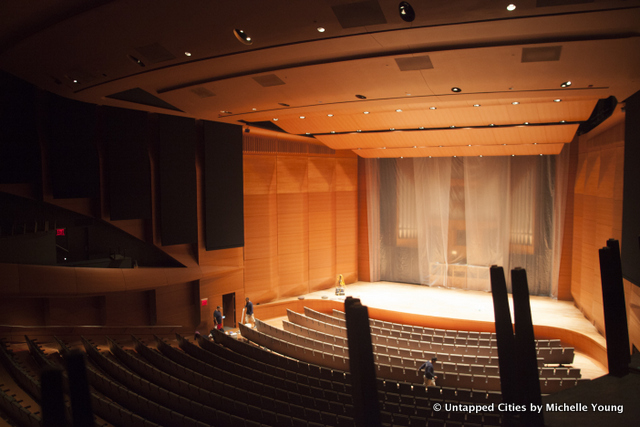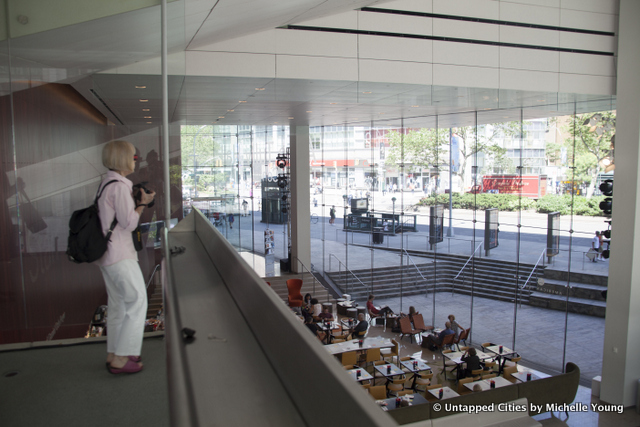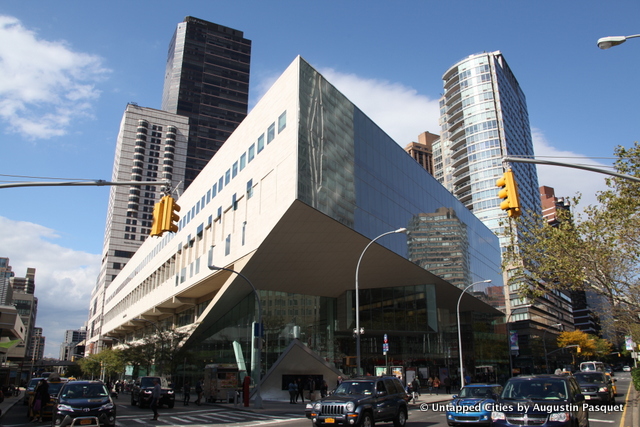3. The curvature of Alice Tully Hall’s glass frontage has no precedent, says Levy, nor did the interior’s “blushing” walls, which change color as performance time approaches, exist anywhere else.
 Tully’s complex glass wall reflects traffic on 65th Street.
Tully’s complex glass wall reflects traffic on 65th Street.
Alice Tully, a concert hall that hadn’t been renovated since its 1969 opening, was originally a concrete Brutalist building designed by architect Pietro Belluschi for a very different era in which high arts like chamber music maintained an existence removed from the general public. Today, splendid classical musicians play on New York City’s streets and in subway stations, and the strains of Brahms and Beethoven are familiar and loved. Thus it’s only right that Tully’s once hard-to-find main entrance has been demolished and replaced with a 3-story, all-glass grand foyer and open public plaza beneath the Juilliard School’s transparent new facade and cantilevered canopy.
 Inside Alice Tully Hall
Inside Alice Tully Hall
 View of American Table from a cantilevered viewing spot in Alice Tully Hall
View of American Table from a cantilevered viewing spot in Alice Tully Hall
Marcus Samuelsson has opened an immensely popular American Table, which emphasizes regional influences. Inside, the new Tully has what the NYT calls a “womblike performance space, its surfaces flush with new life,” in part because of the enveloping wood, cut from a single African moabi tree. Or, as Anthony Tommasini wrote in praise of FXFowle Architects, Tully’s “Starr Theater, though not any smaller, now feels intimate and warm.”
 Alice Tully Hall now embraces and mirrors NYC
Alice Tully Hall now embraces and mirrors NYC





